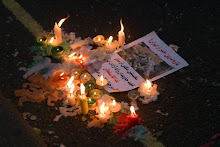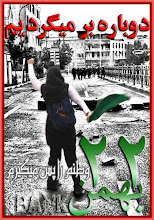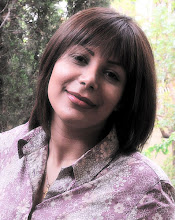







Edmund de Waal once commented that, ‘ceramics have not been well served by museums.’ They haven’t. Museums have tended to view ceramics as historic objects. The meaning and purpose of contemporary ceramic work, which is sometimes exhibited alongside, is at best uncertain and at worst the whole lot is confined to the top floor of the museum, like the mad woman in the attic, disconnected from the rest of the museum’s displays, with few visitors and offering no meaningful dialogue with today’s audiences.
So, the ‘mad woman in the attic,’ the jilted or abandoned bride,- namely the V&A’s ceramic collections - has had a make-over. Someone has bravely attempted to sort out and make sense of the most colossal symptom of inflated imperial over-production imaginable. The V&A seems to have examples of everything ceramic that has ever been made or collected.
I am one of those few visitors that used to climb to the top of the museum, with flask and sandwiches and compass in case of bad weather, and spend hours gazing at rose-painted Chinese enamelware, and decorous Sevres porcelain. I’d stop, about half way up to adore the stoves, which had somehow escaped. I seem to remember them being on the next floor down, but I’m probably wrong.
The main thing is that it’s all still there – acres of it in new cabinets. Yes, it’s still all in cabinets. They haven’t gone that radical. Much of it is still crowded like Kings Cross on a rainy Friday. But you can still warm yourself on the stoves and gaze with love at the Andrea della Robbia leaning nonchalantly against a wall somewhere.
Pots At Work: Teaching Ceramics
The really BIG change is the teaching gallery. It has a real live studio where you can watch real live potters making things, like going to the zoo, only I don’t suppose mating in public is encouraged. There’s a reconstruction of a Lucie Rie studio – now this is interesting because the ‘studio potter’ is presented as an historical exhibit – so this must be the stuffed extinct animals section of the museum. The middle bit of this gallery, like a spine running down the centre, is a display of clays and glazes and all manner of ‘how to do it’ explanations and instructions. It’s brilliant. The best bit of the whole show is in this section. It’s called ‘under the sea’ (something like that). It’s a case full crockery that has been salvaged from wrecked ships that were carrying tea and the like from ‘The East’ and also carried chests full of crockery. It’s got bits of coral and you can almost smell the salt water and see the fish. It’s wonderful.
Contemporary Collection: The Ready-Mades
Finally – the other big change – is the attempt to exhibit the contemporary collection and connect it to the historic collections. Where they’ve mixed it up with the historic collections, it really works well. The teaching section has a several cases of contemporary work –mostly from Norway with a couple of particularly successful pieces by Paul Scott, (UK). These are examples of works where the artists are using ‘ready-mades,’ and they undoubtedly fare best in the V&A context. The overwhelming majority of the collections are made industrially - that’s just what people like to collect. So inevitably the work that is connected with the ceramics industry is in the right context. At last! These makers have not, in the main, been served that well by craft galleries.
Contemporary Collection: The Clay Pots
There ‘s also a collection of industrial based work in a cabinet in the ‘Contemporary Ceramics’ section and, again, you immediately sense it’s in the right place. The rest of the work still struggles for some reason. Ten years ago, someone asked me to go and look at the V&A contemporary ceramics collection and tell them what I thought of it. I said I thought it was an absolute disgrace. I remember being really horrified. It was an apology for a collection. Not only was it shockingly narrow, restricted to the worst kind of stoneware ‘Camberwell-Grey’ studio ‘vessels,’ it didn’t even have the best examples of those. It resembled the reject section of Oxfam – the stuff they put in boxes on the pavement and sell for a quid. It’s not quite as bad now. Modernist stoneware has expanded to the next phase of modernism, but it’s all still strangely soulless. From dirty modernism we’ve progressed to clean shiney modernism. They are now buying better examples of people’s work and certainly the industrial collaborations and readymade users are looking good – these kind of artists just make much more sense of the obsession with being clean, shiny and meticulous.
Signs and Wonders: Edmund De Waal, 2009 - He started this post so I’ll let him end it
Structure
The new, improved contemporary collection is displayed in a dark and solemn room like a tomb. It’s not a room as such, it is a wooden gallery - In the middle is a square opening. You can peer over the balustrade down into the entrance hall. The big lumpen mounds of fired clay which represent the truth-to-materials section of the contemporary work is arranged on a semi circular raised runway which embraces the gallery. The semi circle of the ‘stage’ – for such it is – the pots are spot lit in a brave effort to make them look more dramatic - connects it to the dome above. The bright white of the dome is circled at its base by a glistening red steel bracket. If you were to take a cross section of the bracket it would look like one of those square brackets: ] - like that. On the lower lip of the bracket are perched the white pots you probably associate with Edmund de Waal. The overall effect is slightly more elegant-interior-design-ish than I was expecting. I had imagined something that would look immensely precarious and a bit dangerous, with the pots stacked up to some height. It’s actually much more controlled than that, more arranged. The colour is magnificent. It really lifts the drowsy darkness lurking below – there is a lightness about the work, both in the sense that it is well lit and in the weightlessness sense, that provides a sharp and very welcome contrast to the layer beneath – where one half expects some of the crustier pots to start hatching.
What It Feels Like
The best bit is remembering to check from the entrance hall downstairs on your way out. You really can see it from the ground floor. From there it resembles the gums of some frightful hag bearing her chipped teeth at you. When you get closer, the chipped teeth turn out to be pots. They contain elements of various part of the collection so it is like a celestial meditation on the mighty imperial collection of collections.
Congress
One of the aims of Signs and Wonders was to connect the historic and contemporary collections and to embed it all in the architecture of the building. This it does very successfully, especially since it also connects the two, apparently disparate halves of the contemporary collection – the ready-mades and the carefully made, finely produced porcelain appear to have no connection whatever with the big beasts in the darkened cave. If you were to view it Marxist terms, it would be like trying to connect the lumpen proletariat – noble peasants toiling in the cave, with the petty, ever-so-refined bourgeoisie nestling in cabinets with tight lips. De Waal’s pots occupy the space which is exactly in between and which is somewhat under occupied at the moment. He still makes pots. They’re clay pots. They’re not obsessively clean and finicky and tidied up to within an inch of their lives – at least thy don’t look like they are – and porcelain seems to attract the most anally retentive of potters who just cant resist imitating the precision of industrial ware. De Waal relishes the wonky aspects of the material, its ‘mind of its own’ness, he certainly doesn’t do precious – well a bit sometimes, but not so it makes you worry, but not does he pretend he’s toiling in the mud. De Waal’s ‘collection’ is more like a conference of pots and they do succeed in unifying the two halves which is quite a feat.


























































